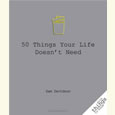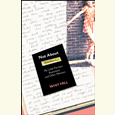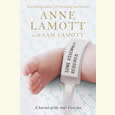To Wonder, to Marvel, to Be Astonished
Pick a card — or two, or three — for instant inspiration
As the epigraph to her newest project, Kickstart Creativity: 50 Prompted Cards to Spark Inspiration, Nashville writer and educator Bonnie Smith Whitehouse chose this admonishment from poet Mary Oliver: “The most regretful people on earth are those who felt the call to creative work, who felt their own creative power restive and uprising, and gave to it neither power nor time.” Artists of all kinds who long for more time and energy to devote to creative pursuits will find much to inspire them packed into this deck of sturdy oversized cards illustrated with brightly colored abstract designs.
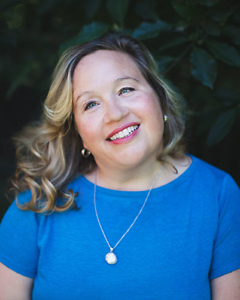 The deck is divided into three sections: “Action,” “Perspective,” and “Intention.” The face of each card within a section announces its concept, such as Enliven, Mystery, or Courage, and gives a brief definition, while the reverse describes the idea in greater detail and offers three ways to apply it to creative work. The author invites users to draw and consider one card at a time or in combinations of two or three from different sections. “All makers hit slumps, doubt their abilities, or need to seek out new sources of inspiration,” says Whitehouse. “Regard this deck as a method, a catalyst, and a tool.”
The deck is divided into three sections: “Action,” “Perspective,” and “Intention.” The face of each card within a section announces its concept, such as Enliven, Mystery, or Courage, and gives a brief definition, while the reverse describes the idea in greater detail and offers three ways to apply it to creative work. The author invites users to draw and consider one card at a time or in combinations of two or three from different sections. “All makers hit slumps, doubt their abilities, or need to seek out new sources of inspiration,” says Whitehouse. “Regard this deck as a method, a catalyst, and a tool.”
Whitehouse answered questions from Chapter 16 via email.
Chapter 16: What do you see as the advantage to using cards rather than presenting the information in a traditional book format?
Bonnie Smith Whitehouse: I spent a long time trying to make this project fit the traditional format of a book, but at the end of the day, a traditional book format wasn’t going to be right because I wanted to create a tool, not a narrative. Einstein famously noted that creativity is “combinatory play,” the practice of combining things. And a traditional linear narrative in book format wouldn’t allow for combinatory play in the way a deck would. There are these endless combinations waiting to be found in the deck! Books can also get lost on the shelf. I envision Kickstart Creativity living prominently in one’s workspace, not on the bookshelf.
Imagine you’re a home cook. This deck has a section that’s got all the contents of your pantry, a section that contains the contents of your refrigerator, and a section that’s the oven. I want to give you the tools so you or your team can mix it up, make the recipes from tried-and-true ingredients, and create something new.
Chapter 16: The methods you suggest don’t apply only to individuals; in fact, you emphasize using the cards when collaborating within groups. Why was this option important to you?
Smith Whitehouse: I consider collaboration as an ethical value. Part of this comes from my academic roots in feminist theory — the wise teachings that care and collaboration can change the world. I believe we must really learn to listen — to listen so deeply with an openness to have our stubborn minds changed. Imagine the transformative possibilities that can happen when we are humble, invested co-creators with others! And on a practical note, employers often cite “ability to work on teams” as one of the primary things they are looking for in potential hires. As a college professor who mentors students, this is something I’m acutely aware of: We do need to learn to work in teams, and we do need to learn to listen to those who may have perspectives that differ from our own. And finally, although I envisioned Kickstart Creativity before we were Zooming day and night, there are endless ways this deck can be utilized during Zoom meetings or collaborations.
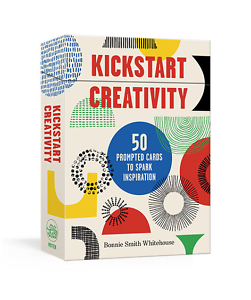 Chapter 16: Several cards in the “Action” section advise “borrowing” the ideas of others (while giving them full credit, of course) as a jumping-off point for new innovations. What are the creative benefits of this approach?
Chapter 16: Several cards in the “Action” section advise “borrowing” the ideas of others (while giving them full credit, of course) as a jumping-off point for new innovations. What are the creative benefits of this approach?
Smith Whitehouse: One of the immediate benefits of borrowing is to begin, to identify something you admire and then go study it. Borrowing is actually a really old idea for creative practice! For example, in Ancient Roman curricula, imitation was a primary form of instruction. Students would riff on the styles of their rhetorical or poetic models until they could master them, and then they would use those imitations as jumping-off points for new arguments or new creations. What often happens next is innovation: Someone comes along and subverts the original model in a paradigm-shifting way. Using borrowing as a jumping-off point is a way of paying homage. When you borrow from others, of course, it’s critical to be mindful of origins and generously give credit where credit is due.
Chapter 16: On a card in the “Perspective” section, you suggest that the reader “push hard against a fixed surface (like the floor or a wall) as you inwardly resolve to resist an obstacle that stands in the way of the work you dream of doing.” Can you describe a time in your own life when you overcame an obstacle to your ambitions?
Smith Whitehouse: With the caveat and acknowledgement that I am a white Southern woman of means who had a top-notch education and immense privileges and advantages, I would say that, without a doubt, the biggest obstacle that has stood in the way of achieving my dreams is my fear of the work not being good enough or the dread that when someone sees my work, it won’t pass muster and they won’t think I’m worthy anymore. The ultimate therapeutic pep talk for me are these lines from Theodore Roosevelt’s “Man in the Arena” speech he gave in 1910 in Paris. I probably read them to myself several times a week:
It is not the critic who counts; not the man who points out how the strong man stumbles, or where the doer of deeds could have done them better. The credit belongs to the man who is actually in the arena, whose face is marred by dust and sweat and blood; who strives valiantly; who errs, who comes short again and again, because there is no effort without error and shortcoming; but who does actually strive to do the deeds; who knows great enthusiasms, the great devotions; who spends himself in a worthy cause; who at the best knows in the end the triumph of high achievement, and who at the worst, if he fails, at least fails while daring greatly, so that his place shall never be with those cold and timid souls who neither know victory nor defeat.
Chapter 16: An “Intention” card introduces readers to the Japanese concept of wabi-sabi, whose three lessons you describe as “Nothing lasts. Nothing is finished. Nothing is perfect.” How can this philosophy of impermanence inspire greater creative freedom?
Smith Whitehouse: The process of making Kickstart Creativity into a deck instead of a traditional book taught me that sometimes linearity isn’t the answer. Not every creative process subscribes to the traditional, Western beginning-middle-end pattern. Wabi-sabi embraces a similar idea — that our stops and starts can be generative. Impermanence is also about surrendering to the inevitability of decay — even surrendering so much to it that we let ourselves delight in it! Wabi-sabi reminds us that things go to seed and die; that’s hard, but it’s also good because the natural cycle enables new life to take root. Wabi-sabi welcomes flaws. Kintsugi, which I also write about on that card, showcases the cracks or breaks by literally using the most precious materials to illuminate them! Navajo weavers embrace a similar idea through ch’ihónít’i or spiritlines. In this deliberate practice, the weaver takes a contrasting piece of thread and weaves out of the prescribed pattern as a way of disconnecting the weaver from the product. I find the idea of deliberate nonattachment to the end product to be extraordinarily liberating.
Chapter 16: Perhaps the single greatest impediment to thoughtfulness in our day is the 24/7 entertainment and information stream. How would you encourage those who long to turn off their phones and tune in to their own imaginations?
Smith Whitehouse: Sometimes I think we hear the word “rest” and immediately imagine “nap” — the act of physically stopping all movement. But I would argue that tuning in to your own capacity to wonder and to imagine is a powerful form of rest. So, when you shut down your phone and tune in to your imagination, you’re not only being respectful to others, but you’re also replenishing yourself. I’d argue that we all need to be ritualizing “tune-out time” every single day, for ourselves and for others. We have an app we use in our house to ritualize wi-fi shutdowns. Light a candle or make a habit of going outside to look at the clouds or listen to the birds. Prioritize rituals that fill up the well for yourself, your family, and your team.
Chapter 16: You write, “Especially in this wild, woolly, and sometimes cruel world, all human beings deserve a little time and space to explore their creative potential.” How can paying attention to the impulse to invent lead to a more fulfilling life?
Smith Whitehouse: I think of exploring our creative potential as a birthright. Humans make things, and not just for utility. We make things to experience the joy of holding and sharing our creations. We make things because we are enchanted by beauty. But always in the back of my head is the naysaying voice reminding me that creative impulses also led to the invention of Zyklon-B and its eventual implementation in mass murder and genocide. The impulse to invent can lead to a more fulfilling life, but I think we also need to consider how those impulses can serve others — how they can bring about justice, encourage generosity, cultivate mercy, and so on.
“Intention” is the third section of Kickstart Creativity for this very reason. Exploring creative potential should include meditating on how our work can have a deeper significance, a higher aspiration. I don’t invoke him often in the deck, but Aristotle informs much of my thinking on this question because of what he had to say about techne and poiesis (both of which have to do with making things), as well as arête, which I devote a card to in the deck. Arête is the notion of living up to your potential, being excellent, and choosing that which is virtuous and good.
Chapter 16: According to your website, “life was forever changed” when you read Pilgrim at Tinker Creek as a teenager. How did Annie Dillard change your life at 16? What other artists have been instrumental to your understanding and development of your gifts?
Smith Whitehouse: I was privileged to be a student at the Tennessee Governor’s School for Humanities as a 16-year-old. Our professor assigned readings from Annie Dillard’s Pilgrim at Tinker Creek, and they truly opened my mind. In that book, Dillard looks very closely at small things and develops big, magnificent, sacred ideas about them. To paraphrase William Blake, she shows us how to see the world in a grain of sand and heaven in a wildflower. She is always on the hunt for things that will make her jaw drop open with awe — but her search for magic and mystery happens in the places where she’s rooted, right in the neighborhood. I wanted not only to write like that, but to be like that. I couldn’t stop thinking about the way she married the theological, the rhetorical, and the poetic. Her book Holy the Firm is brief but similarly superb; I read it every year or so just to be reminded of her brilliance.
Artists who preach the gospel of wonder have inspired me. Madeleine L’Engle’s novels stoked my imagination as a teenager, and I can’t wait to reread them with my own boys. I’ve been sitting with Audre Lorde’s “A Litany for Survival” a lot lately as a sister-friend walks through a terminal illness. I just started reading the poetry of astronomer Rebecca Elson. Maggie Blake Bailey’s new poetry collection Visitation is an absolutely stunning reflection on motherhood. Whenever I need a reminder to get out of my head, I have turned and returned to Natalie Goldberg’s Writing Down the Bones. The language of The Book of Common Prayer and the genius and generosity of the Indigo Girls have been constant companions for most of my life! To wonder, to marvel, to be astonished – these are the disciplines I’m going to spend the rest of my days trying to master.
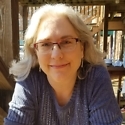
Tina Chambers has worked as a technical editor at an engineering firm and as an editorial assistant at Peachtree Publishers, where she worked on books by Erskine Caldwell, Will Campbell, and Ferrol Sams, to name a few. She lives in Chattanooga.

